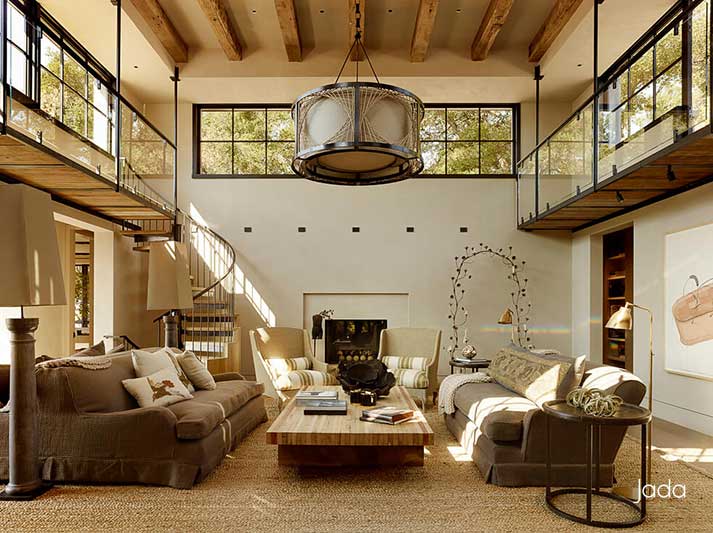Healthy building design has never been more important. Our largest exposure to pollutants occurs indoors, where we spend up to 90% of our time in office buildings, schools, and our homes.
When Indoor Air Quality (IAQ) is poor, building occupants can experience building-related illnesses such as fatigue, irritation, and headaches. Some chemicals found indoors have been linked to more severe health consequences such as impaired cognitive function, congenital defects, and cancer.
Architects, designers, and builders have a unique opportunity to improve building occupants' health and wellbeing by making healthy IAQ a priority.
Here are five ways to improve indoor air quality when designing healthy buildings:
Prevent Bacterial Pollutants with Windows that Encourage Airflow
One-third to one-half of all structures have damp conditions that may encourage the development of mold and bacteria pollutants, which can lead to allergic reactions and infectious disease.
The Environmental Protection Agency (EPA) recommends increasing ventilation and air movement by opening windows and doors to control moisture and prevent mold in buildings.
When selecting windows and doors for your healthy building design, look to fenestration products with a range of movement to ensure proper airflow and prevent bacterial pollutants in indoor environments.
Improving IAQ with Ventilation and Air Purification Systems
Ventilating with clean outdoor air is one of the primary ways to improve IAQ, and research shows that using air filtration can be an effective way to improve air quality.
Ventilation is one of Nine Foundations of a Healthy Building developed by the Harvard T.H. Chan School of Public Health, who recommends buildings "meet or exceed local outdoor air ventilation rate guidelines to control indoor sources of odors, chemicals, and carbon dioxide. Filter outdoor and recirculated air with a minimum removal efficiency of 75% for all particle size fractions including nano."
In the wake of COVID-19, air ventilation and filtration are even more critical for the health of building occupants.
According to the Centers for Disease Control (CDC), "SARS-CoV-2 viral particles spread between people more readily indoors than outdoors. When indoors, ventilation mitigation strategies help to offset the absence of natural wind and reduce the concentration of viral particles in the indoor air. Protective ventilation practices and interventions can reduce the airborne concentration, which reduces the overall viral dose to occupants."
Reduce Toxins from Building Materials and Furnishings
According to the EPA, concentrations of VOCs are consistently higher indoors -- up to 10x higher -- than outdoors. VOCs (volatile organic compounds) are emitted as gasses and include a variety of chemicals with a long list of known short- and long-term adverse health effects.
The primary sources of VOCs are building materials, furnishings, paints and solvents, wood preservatives, composite wood products, office equipment, and cleaning/ disinfecting products.
Reduce VOCs inside a building by choosing materials with green certifications and standards, such as:
Incorporating Daylight Into Interior Environments
Research has shown that low levels of UV exposure are associated with negative health effects such as depression, dementia, disturbed circadian rhythm, bone frailty, renal dysfunction, and weakened immune system, among others.
Healthy buildings will bring occupants plenty of the health benefits of sunlight. Daylighting, the use of natural light to support the needs of occupants, has been touted for its aesthetic and health-supporting properties by designers and researchers alike.
Researchers have reported that daylit environments provide the mental and visual stimulation necessary to regulate human circadian rhythms as well as increase occupant productivity and comfort.
While windows may be the first thing you think of when it comes to incorporating more natural light into a building, daylighting should be considered at the very beginning of a design and take into account the building as a whole. Elements such as window size and location, incorporations of views to the interior or exterior of the building, overall light pollution, lighting design and controls, and positioning of interior and exterior shading can all impact a building’s natural light.

Bringing the Outdoors in with Biophilic Design
Biophilic design, the use of natural elements to bring the outdoors in, has been shown to improve both psychological and physiological health for occupants.
Research has linked contact with nature to health and wellbeing benefits including reduced stress, improved mental health, better sleep, lowered blood pressure, reduced obesity, improved immune function, improved general health, and many more.
Biophilic design is more than just adding plants to an interior space. You can include biophilic design elements such as:
- Biomimicry, the use of biomorphic patterns and arrangements seen in nature
- Daylighting and use of natural light changes throughout the day
- Including the presence of water
- Airflow and introduction of outdoor air
Healthy Buildings Require Healthy Indoor Air Quality
When designing healthy buildings, IAQ should be at the top of your list of concerns. Without addressing IAQ, buildings can make occupants sick and unproductive. Conversely, architects, designers, and builders have an opportunity to improve and protect the health of building occupants by designing with healthy IAQ in mind.
Find out how Jada steel windows and doors can impact the lighting and airflow needs of your next project. Explore our product details or talk to our sales team today.